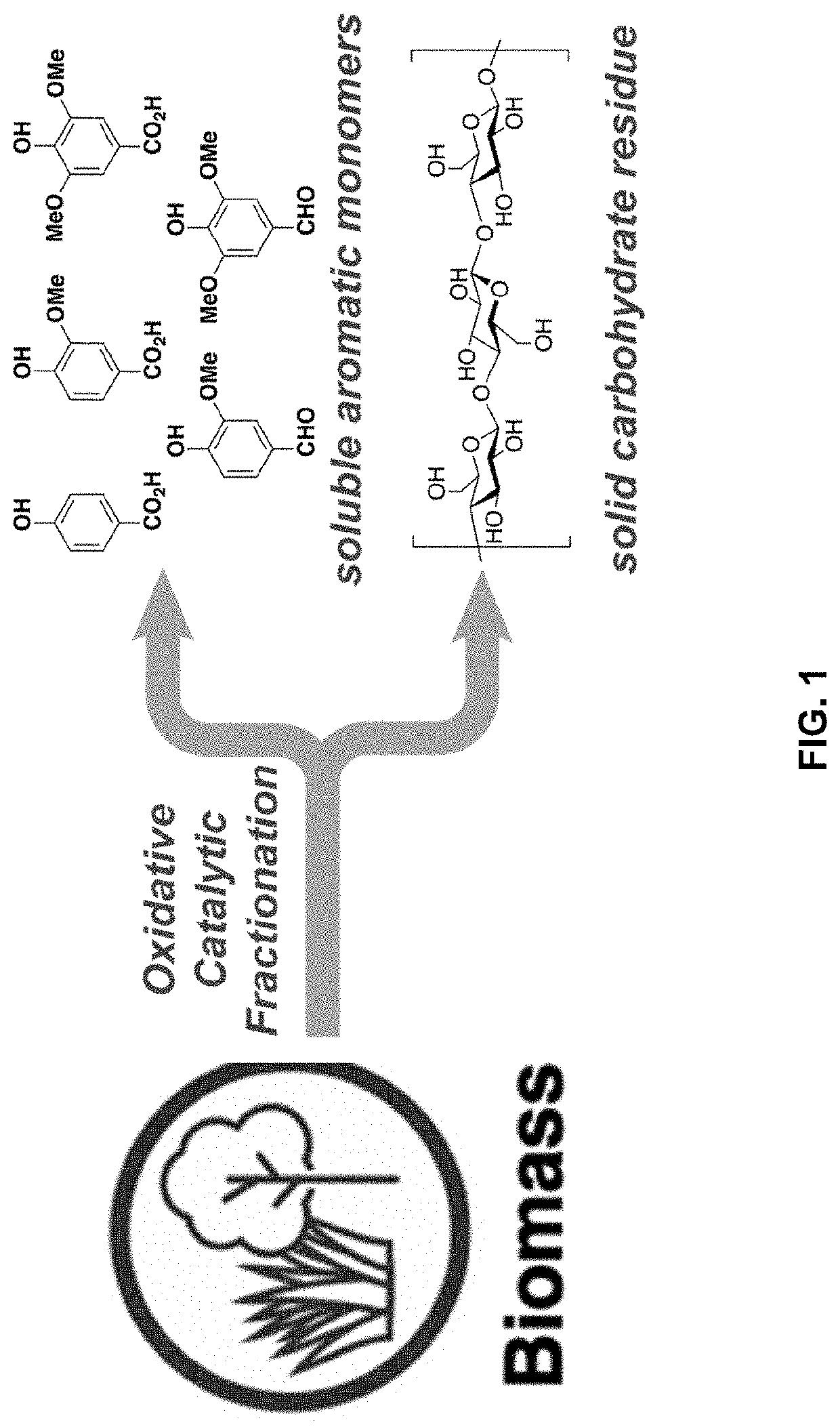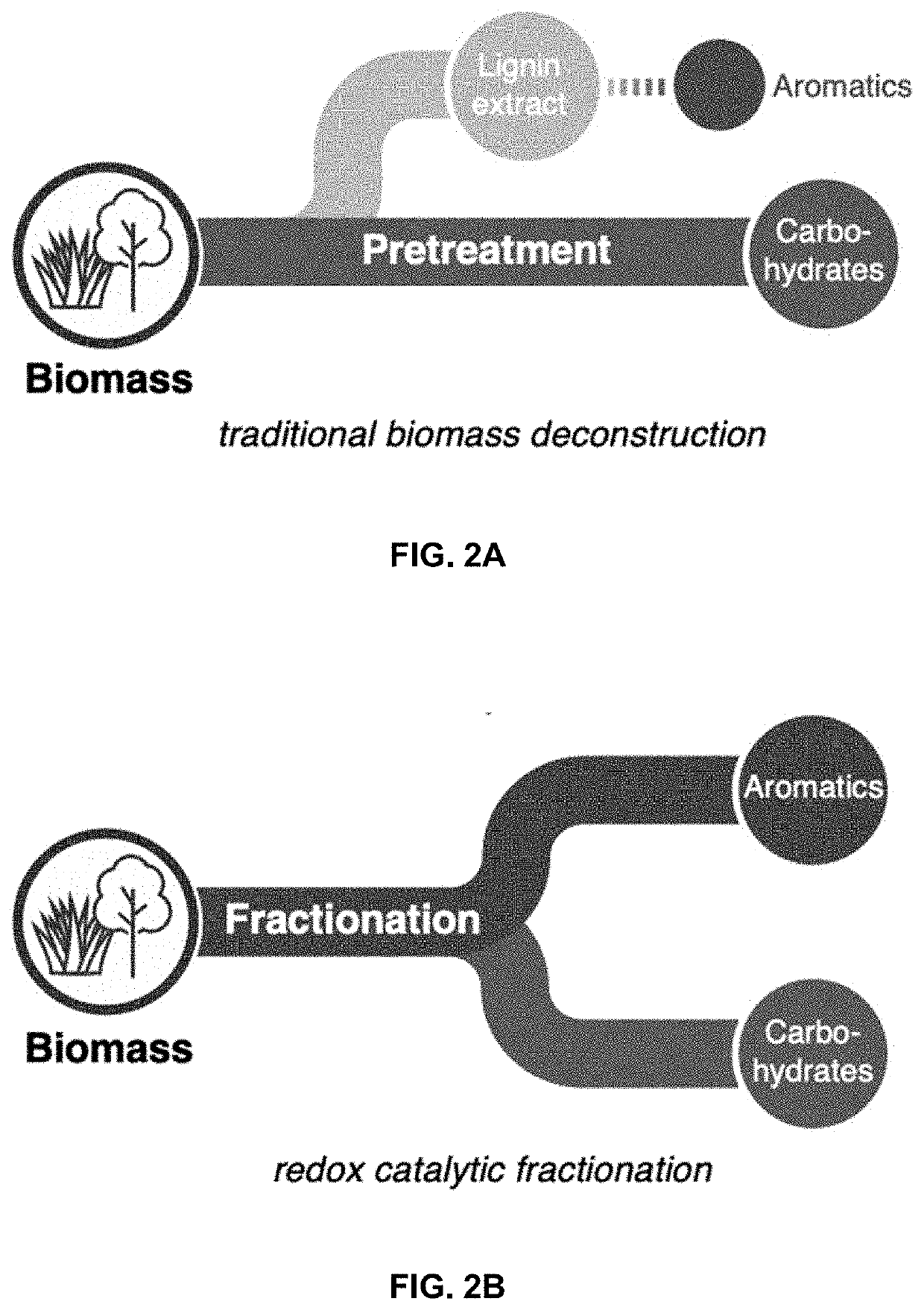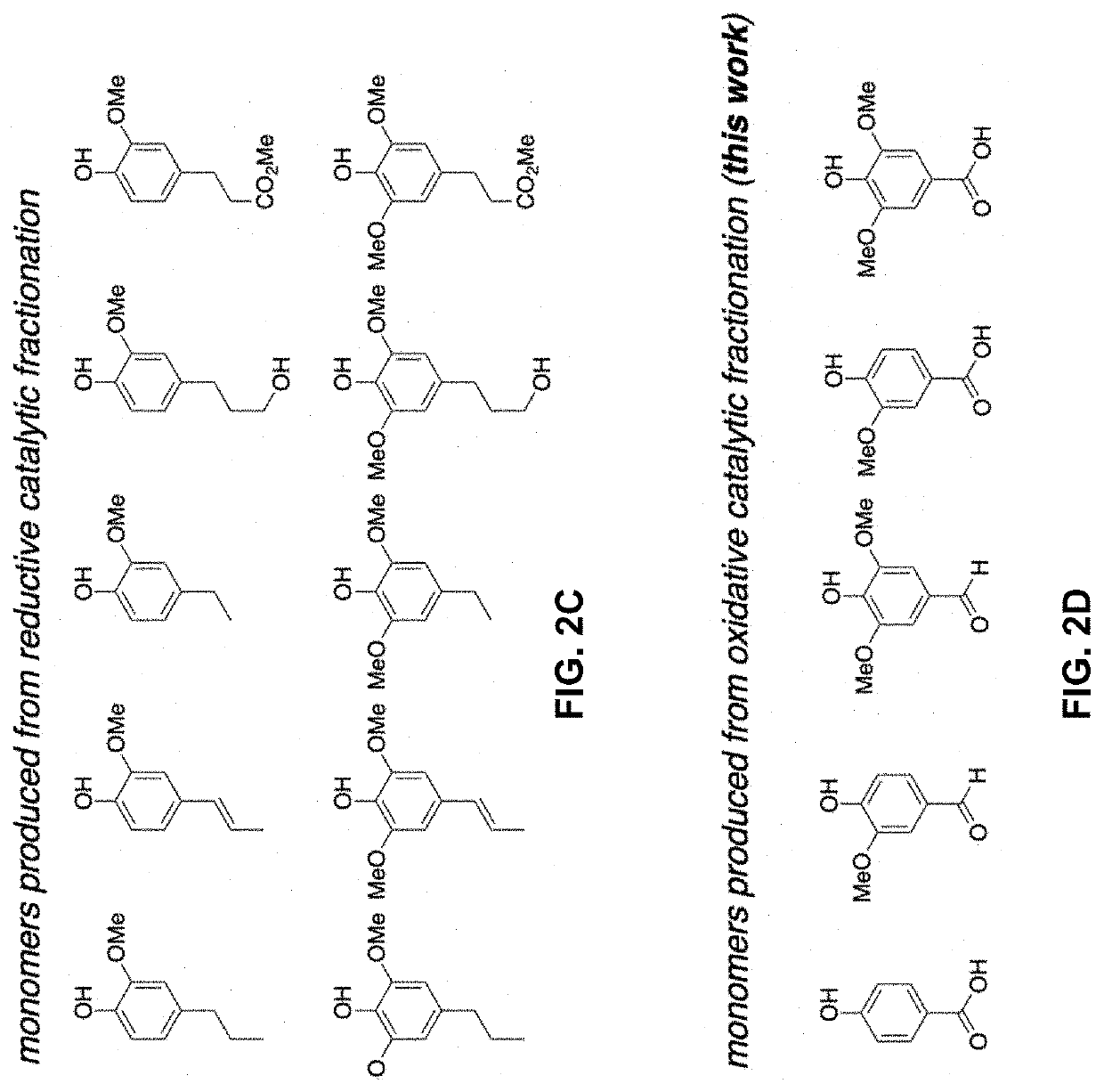Methods of depolymerizing lignin
a technology of lignin and depolymerization method, which is applied in the preparation of heterocyclic compounds, physical/chemical process catalysts, and lignin derivatives, etc., can solve the problems of less representative lignin model compounds and less promising behavior toward further depolymerization to monomers
- Summary
- Abstract
- Description
- Claims
- Application Information
AI Technical Summary
Benefits of technology
Problems solved by technology
Method used
Image
Examples
examples
Oxidative Catalytic Fractionation of Raw Biomass Under Non-Alkaline Conditions
Summary
[0074]Economically viable biorefineries will depend on valorization of both sugar and lignin fractions in biomass. Pretreatment methods are commonly used to modify different components in biomass before the conversion into target products, but they often lead to chemical modification, degradation, and / or low yields of lignin. Catalytic fractionation approaches provide a possible solution to these challenges by separating the polymeric sugar and lignin fractions in the presence of a catalyst that promotes hydrogenolytic cleavage of the lignin into alkylated phenols. Here, we demonstrate an oxidative fractionation method that is conducted in the presence of a non-precious-metal Co—N / C catalyst and O2. This process affords a 24 wt % yield of oxygenated aromatics from lignin while preserving a high-quality carbohydrate stream. The aromatic carboxylic acids and aldehydes derived from this process offer a...
PUM
| Property | Measurement | Unit |
|---|---|---|
| partial pressure | aaaaa | aaaaa |
| temperature | aaaaa | aaaaa |
| time | aaaaa | aaaaa |
Abstract
Description
Claims
Application Information
 Login to View More
Login to View More - R&D
- Intellectual Property
- Life Sciences
- Materials
- Tech Scout
- Unparalleled Data Quality
- Higher Quality Content
- 60% Fewer Hallucinations
Browse by: Latest US Patents, China's latest patents, Technical Efficacy Thesaurus, Application Domain, Technology Topic, Popular Technical Reports.
© 2025 PatSnap. All rights reserved.Legal|Privacy policy|Modern Slavery Act Transparency Statement|Sitemap|About US| Contact US: help@patsnap.com



